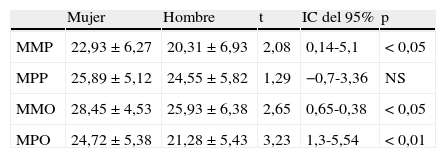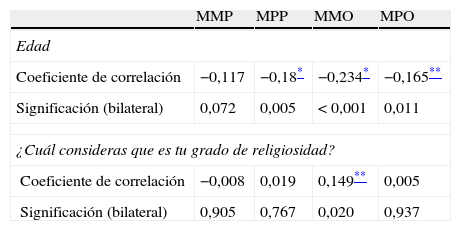Evaluar, en una muestra de estudiantes de enfermería, el miedo ante la muerte propia y ajena y sus relaciones con diversas variables sociodemográficas: sexo, edad, curso académico, origen geográfico, estado civil y experiencias previas con la muerte.
MétodoDiseño observacional, descriptivo y transversal. Participaron 243 estudiantes de enfermería, que respondieron a un cuestionario que contenía las variables sociodemográficas y la forma española de la escala de miedo a la muerte de Collet-Lester (CLFDS). En el análisis estadístico se calcularon medias y desviaciones típicas, prueba t de Student, ANOVA y coeficientes de correlación de Pearson y Spearman.
ResultadosSe obtuvieron correlaciones negativas entre la CLFDS y la edad. Las mujeres obtienen puntuaciones más altas en las cuatro subescalas de la CLFDS. La creencia y la práctica religiosa correlacionan negativamente con el miedo a la propia muerte. El contacto previo con la muerte correlaciona negativamente con tres de las subescalas de la CLFDS. Los sujetos solteros puntúan más alto en dos de las subescalas de la CLFDS. Según el curso académico se observa significación estadística en la subescala de miedo a la muerte de otros.
ConclusionesPara planificar la formación de los estudiantes de enfermería en competencias específicas para el acompañamiento al final de la vida, es muy importante conocer sus actitudes ante la muerte y sus variables relacionadas, así como los elementos que producen en ellos mayores reacciones de miedo y/o ansiedad, que pueden afectar a la calidad de los cuidados que proporcionen en su futuro ejercicio profesional.
To assess, using a sample of nursing students, the fear of their own death and that of others and its relationship with several sociodemographic variables: gender, age, academic year, geographical origin, marital status and previous experiences with death.
MethodsAn observational, descriptive and cross-sectional study including 243 nursing students who completed a questionnaire containing the sociodemographic variables and the Spanish version of the Collet-Lester's Fear of Death Scale (CLFDS). Means and standard deviations, Student t test, ANOVA and Pearson and Spearman correlation coefficients, were calculated in the statistical analysis.
ResultsA negative correlation was obtained between the CLFDS and age. Women scored higher on the four subscales of the CLFDS. Religious belief and practice were negatively correlated with fear of own death. Previous experiences with death are negatively correlated with three subscales of the CLFDS. Single nursing students scored higher on two subscales of the CLFDS. Statistical significance with the academic year was observed in the subscale of fear of others’ death.
ConclusionsTo plan the training of nursing students based on specific competences on caring at the end of life, it is very important to understand the students’ attitudes toward death. It is also important to understand the related variables, as well as the elements that trigger more fear or anxiety in the students, which can affect the quality of care they provide in their future professional practice.
Artículo
Comprando el artículo el PDF del mismo podrá ser descargado
Precio 19,34 €
Comprar ahora









